Home
List of Blogs
WELCOME TO THIS BLOG
The Puls play welder is manufacturer of welding controllers in
Ludhiana of North India.
We are specialist in manufacturing of spot, projection and seam welding panels for SCR base current control machines. All these controllers are made with best quality parts available in market. The “Spot welding”, “Projection welding”, "Resistance Welder" and “Seam Welder” panels are suitable for new machines and for any brand old machines. The panels have mainly 4 segments for welding machines like: For Paddle operated spot welding machines, for Pneumatic Spot welding machine, for Pneumatic projection welding & for seam welding machines. All these panels are microcontroller base and have SCR phase angle control output to adjust welding current electronically. The panels are always readily available. We have several models of panels to match every customer’s needs. Following are the concise specification each model.
ALL PRODUCTS
Spot Welding Panels
KD322 Paddle Operated #Spot Welding Panel
Model:- KD322
The KD322 spot welding controller is a Microcontroller based welding controller and is made for paddle operated Thyristor controlled machine. It has fast weld time and current setting through knobs. It has inbuilt firing circuit, hence need minimum wiring for fast installation
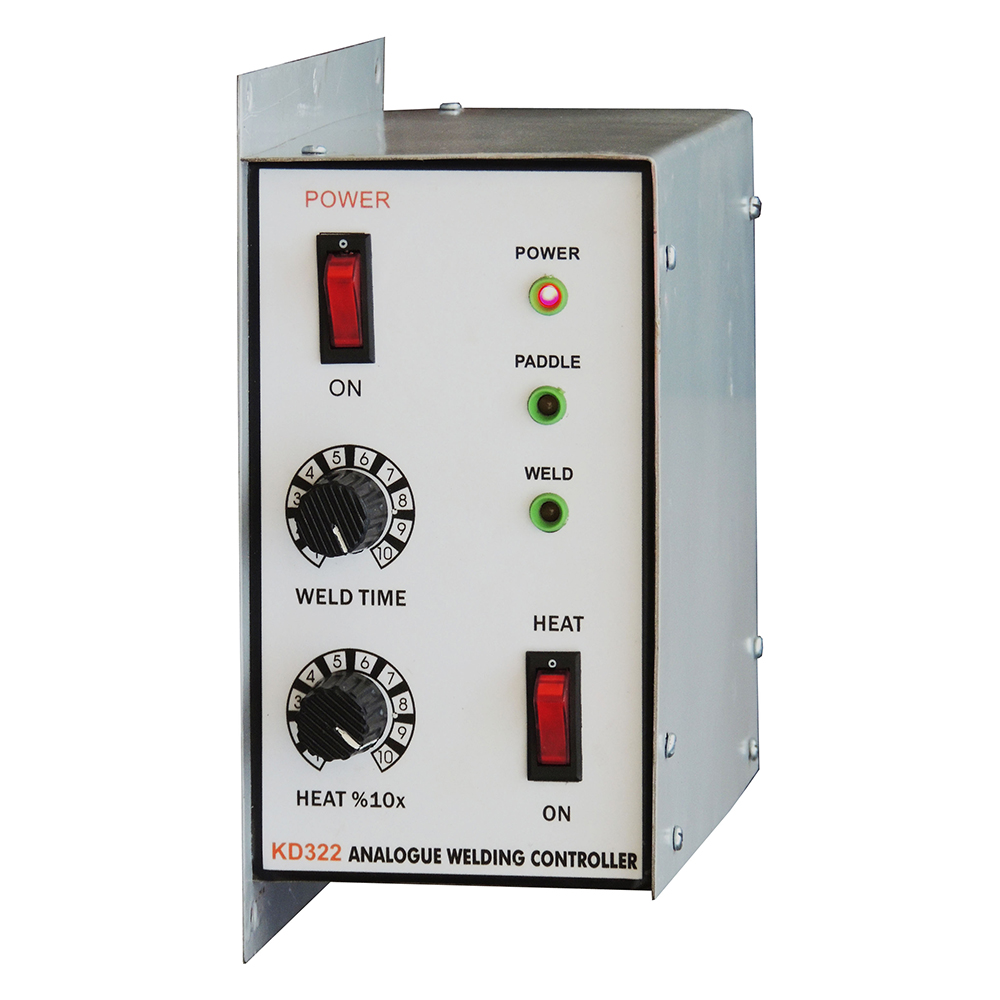
DS330 Paddle Operated Spot Welding Panel
Model:- DS330
The DS330 panel is made for paddle operated spot welding machine.It is suitable for any brand ‘SCR’ controlled, paddle operated spot welder. The inbuilt firing circuit gives hassle free quick installation.
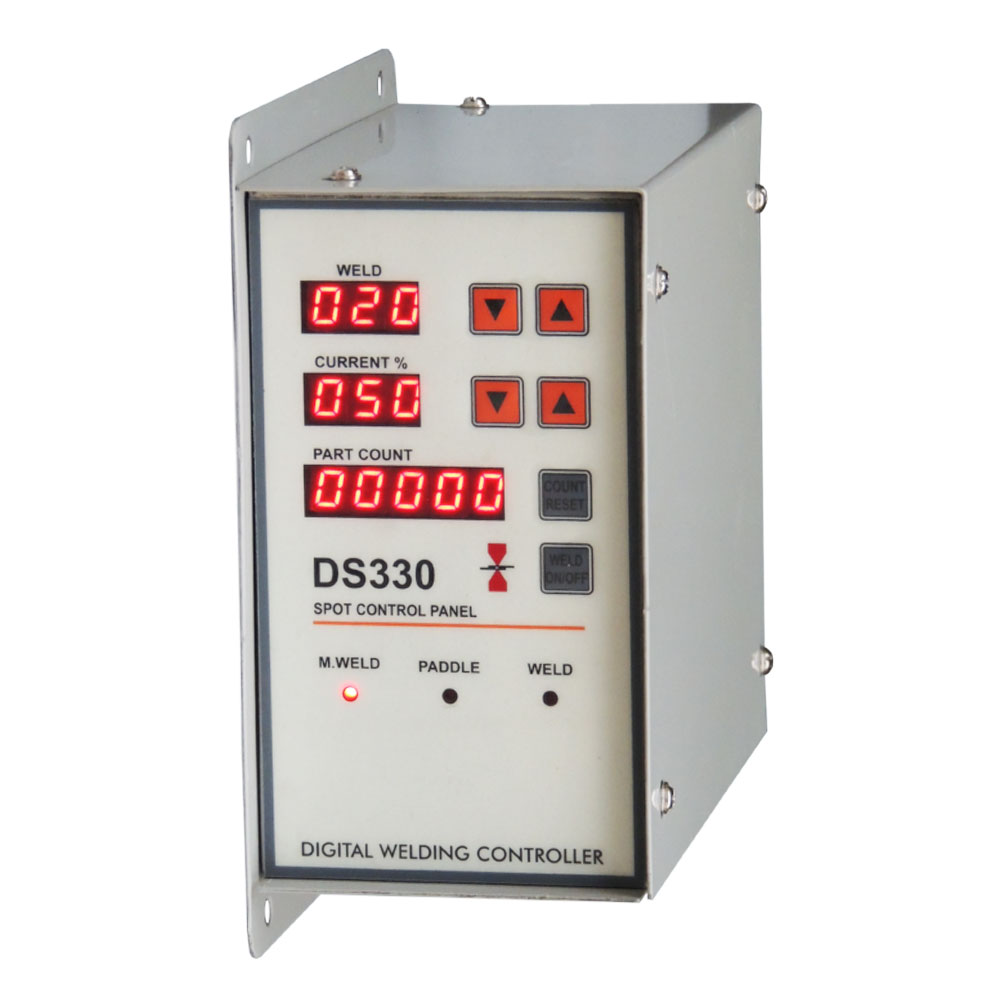
DS324 Easy Operate, Spot / #Resistance WeldingController
Model:- DS324
T The DS324 is simplest and easy operate spot welding and projection welding controller with digital parameter setting. The squeeze, weld, hold timer and weld-current value is directly settable by their ideal tactile switches. All set parameters are retain in memory. The inbuilt firing circuit gives hassle free quick installation.
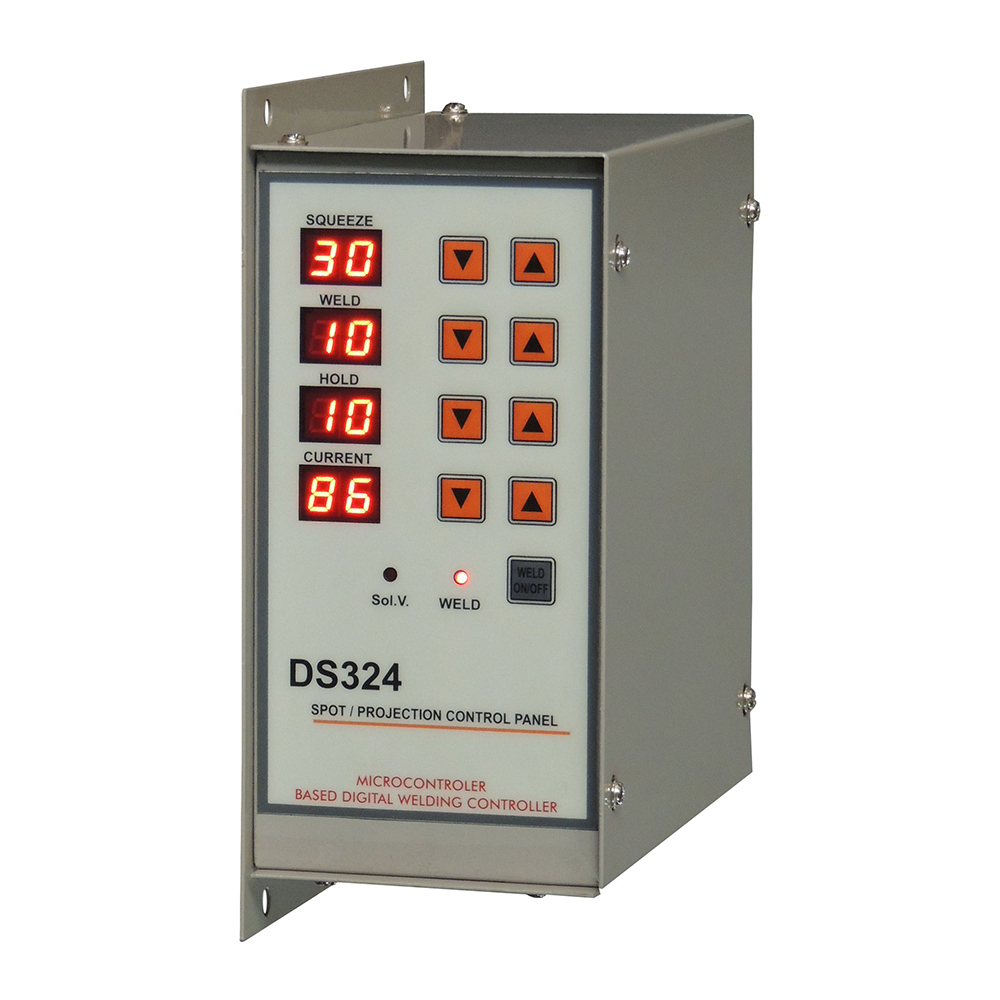
DS309 Spot / #Projection Welding Panel
Model:- DS309
DS309 is most selling economic spot welding controller. Have 10 Program memory. Each program stores Squeeze time, weld time, hold time, off time, Electric current and pert count values. The current control setting is the Thyristor phase angle trigger setting.
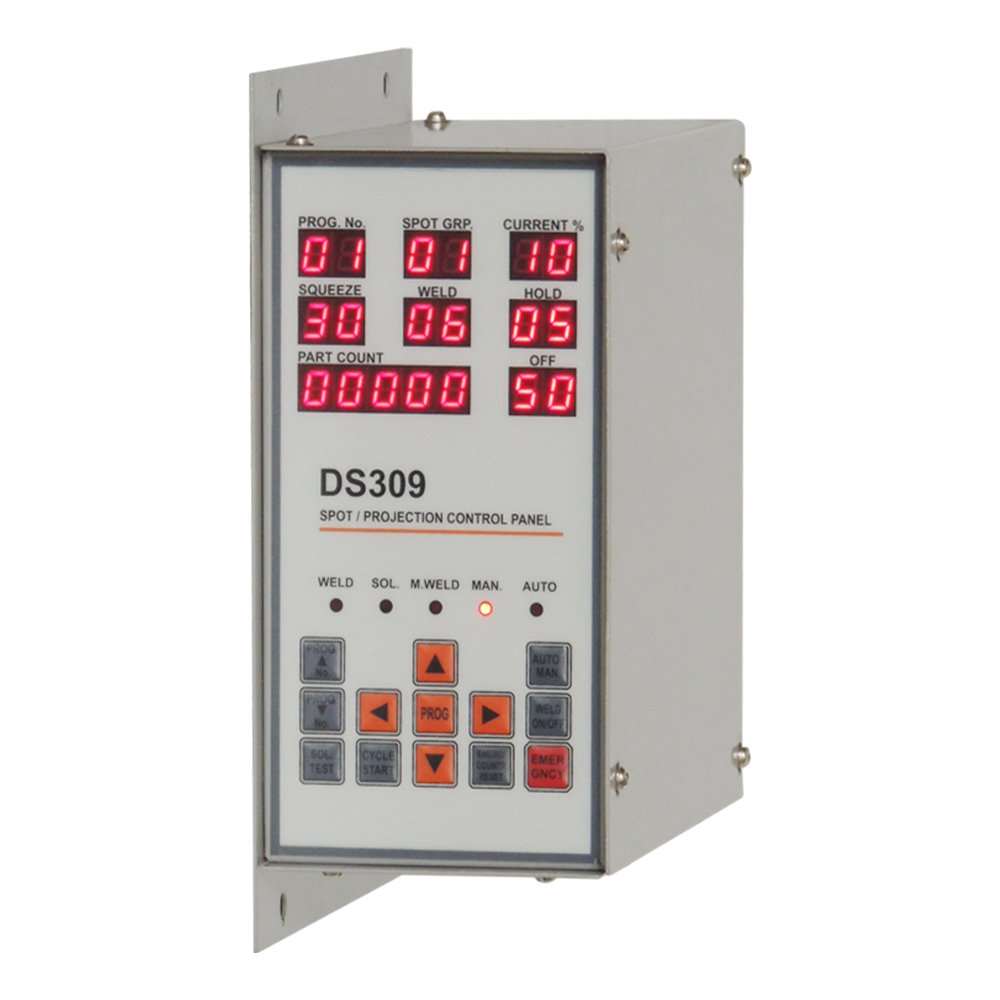
DS310 Spot / Projection Welding Panel
Model:- DS310
DS310 is higher model for general purpose spot and projection welding machines with counter for each program and 10x weld time configurable and thermostat connections for over-temperature safety.
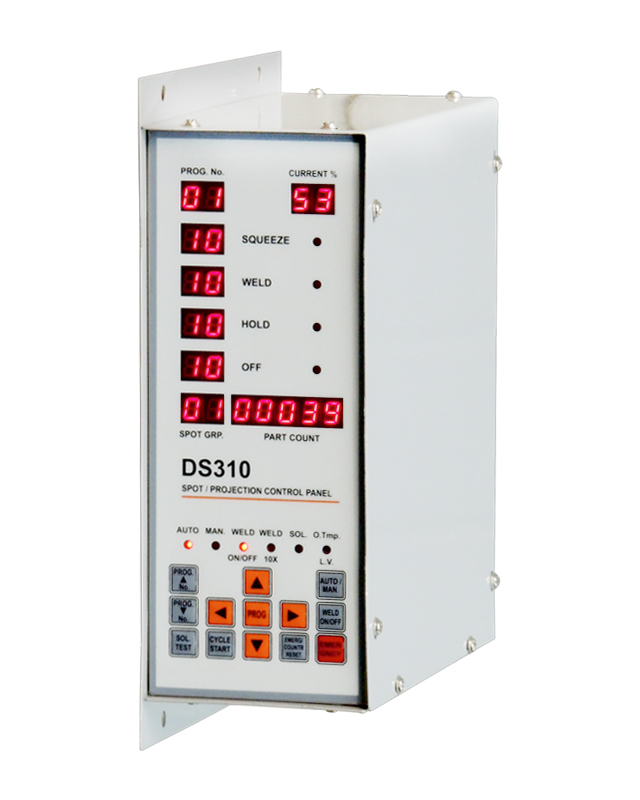
DS311 Projection Welding Panel
Model:- DS311
DS311 is special purpose model for projection welding machines having double cylinder one for job clamping and other cylinder for welding. Beside of all 310 model features more are double squeeze time, triple weld and hold timers.
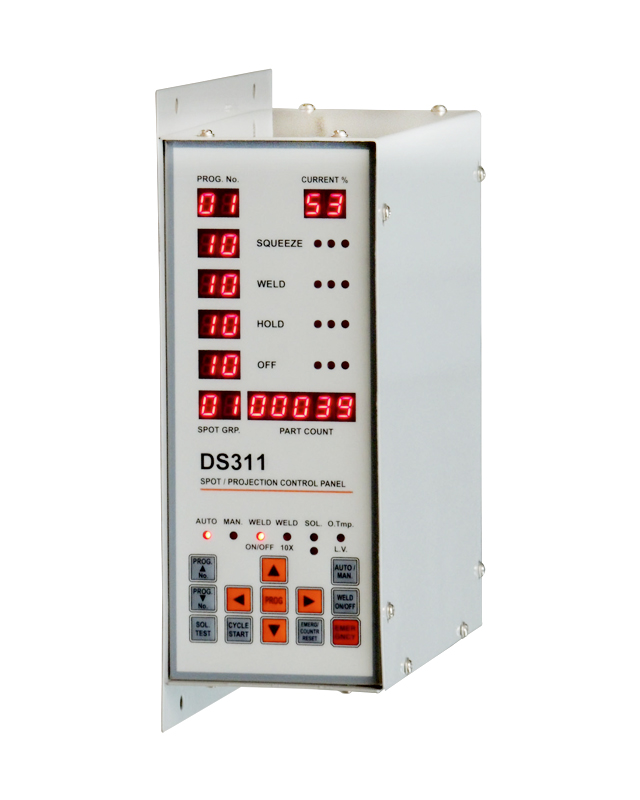
#Double Head Projection Welding Panel
Model:- DS312
The DS312 panel is made for double head projection welding machine that is used to save connected electric supply by placing two operators on a projection welder, when one operator is preparing job to weld the other operator can weld same job on second head. The weld time is configurable to 1x or 10x weld time and panel has thermostat input to protect machine in case of over-heat due to overload or water failure.
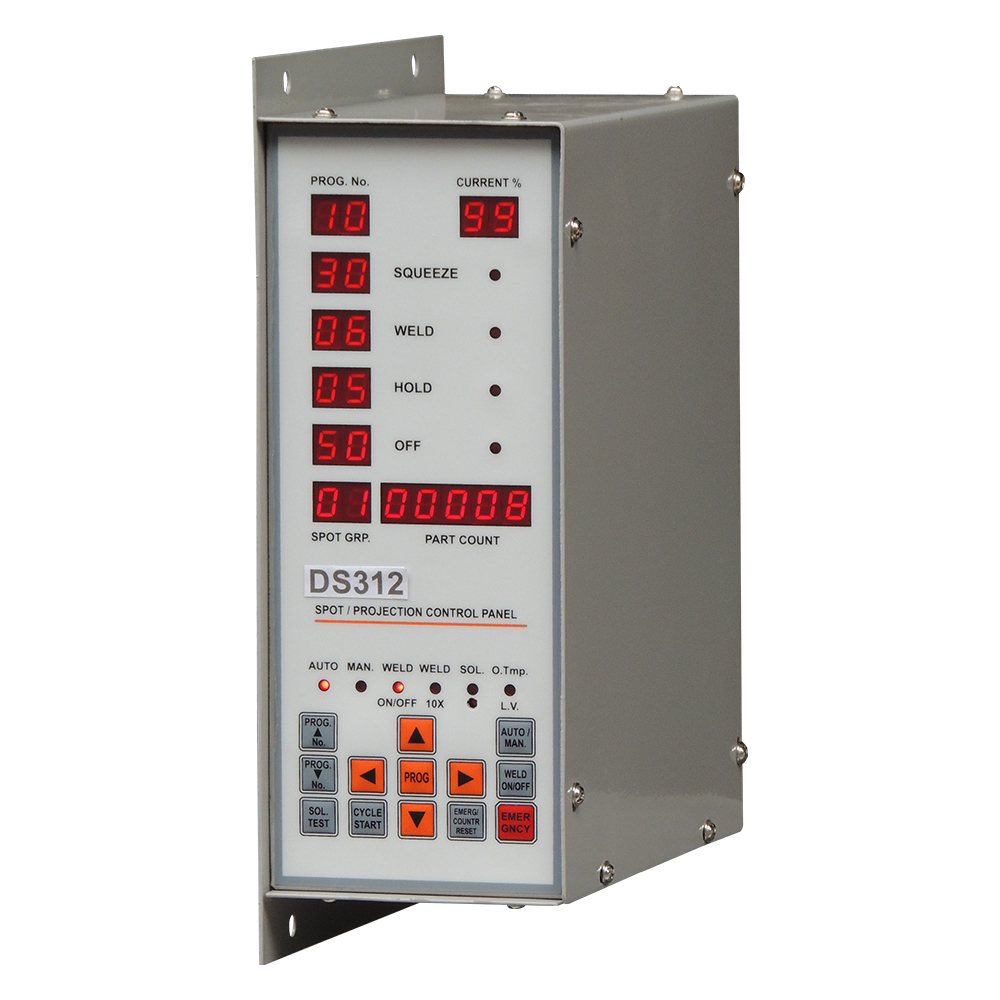
Double Head Projection Welding Panel
Model:- DS312A
The DS312A panel is made for duel head projection welding machine, that is used to save connected electric supply by placing two operators on a projection welder, when one operator is preparing item to weld the other operator can weld same or other item with different settings. The weld time is configurable to 1x or 10x time and panel has thermostat input to protect machine in case of over-heat due to overload or water failure.
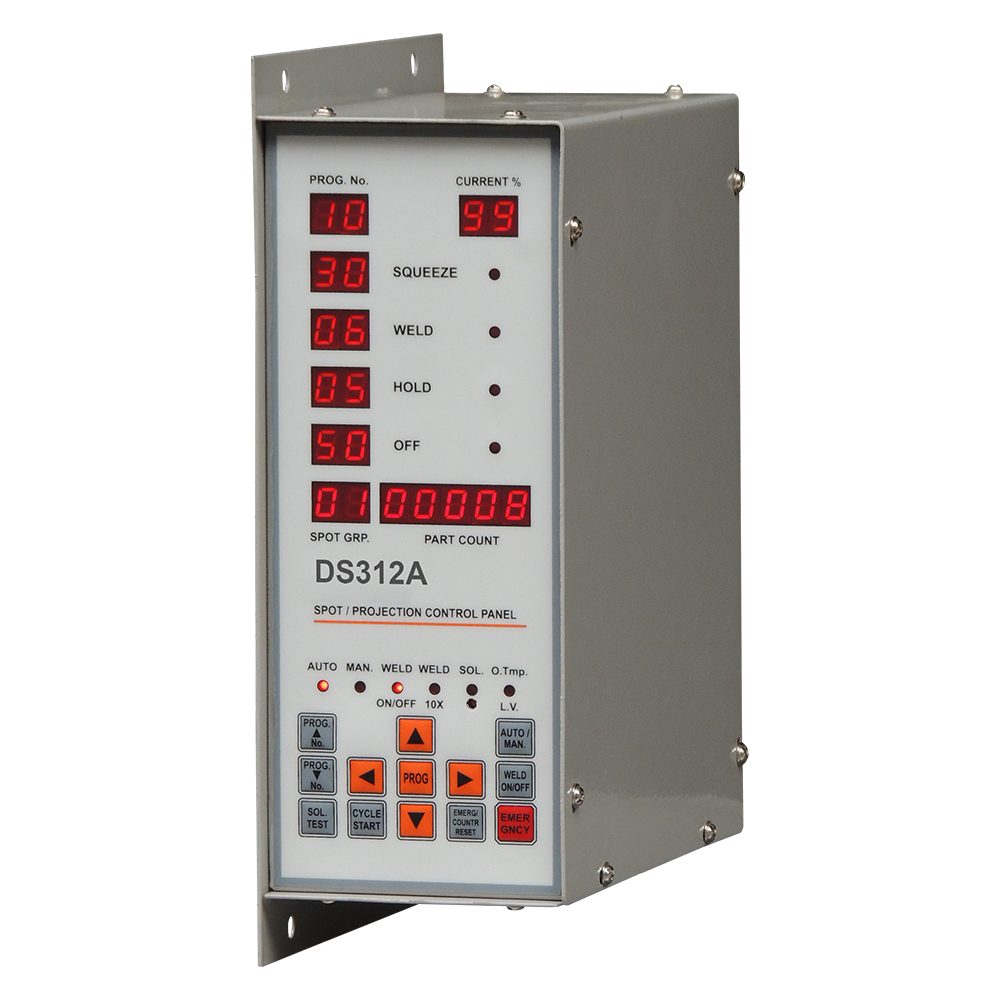
Seam #Resistance Welding Controller
Model:- DS3010
DS3010 is digital synchronous control panel for seam welding machines with group setting for multiple welds on a item and counter for each program and 10x weld time configurable and thermostat connections for over-temperature safety.
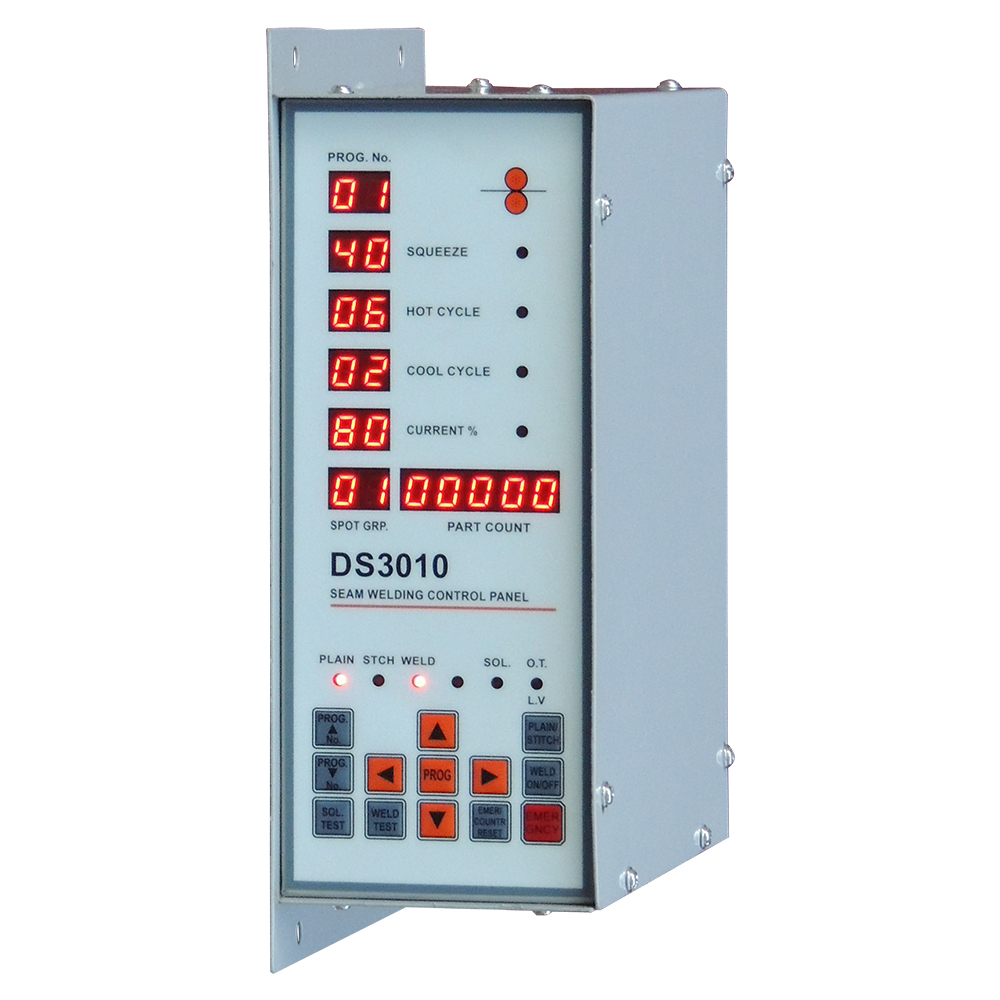
Below is the more detailed description to
understand Spot Welding Controllers.
Before Understand Spot welding Controllers we must understand working & application of spot welding hence below is the introduction of spot welding.
Introduction to spot welding: Spot welding is a vital process in various industries, including automotive, aerospace, electronics, and manufacturing. This technique involves joining two or more metal sheets together by applying heat and pressure at specific points. While spot welding might seem straightforward, achieving consistent and high-quality welds requires precise control over parameters such as current, time, and pressure. In this blog, we'll delve into the significance of spot welding controllers in ensuring efficient and reliable welding operations.
Understanding Spot Welding Controllers: Spot welding controllers serve as the brain behind the welding process, orchestrating the sequence of events necessary for a successful weld. These controllers are sophisticated electronic devices that regulate the flow of electrical current, the duration of the weld cycle, and the force applied during welding. By fine-tuning these parameters, spot welding controllers can produce welds of consistent quality, strength, and appearance.
Key Components and Features:
1. Current Control: One of the critical functions of a spot welding controller is to regulate the electrical current flowing through the welding electrodes. By maintaining a precise current level, the controller ensures uniform heating and fusion of the metal sheets, minimizing defects such as burn-through or insufficient penetration.
2. Time Control: The duration of the welding cycle is another crucial aspect controlled by spot welding controllers. They determine the optimal time needed to apply heat and pressure, considering factors such as material thickness, conductivity, and desired weld strength. Precise timing helps prevent over welding or under welding, leading to consistent weld quality.
3. Pressure Control: Spot welding controllers also manage the force applied during the welding process. By exerting the right amount of pressure, they ensure proper contact between the electrodes and the work-piece, facilitating effective heat transfer and metal bonding. Adjustable pressure settings accommodate variations in material properties and surface conditions.
4. Monitoring and Feedback: Modern spot welding controllers are equipped with sensors and feedback mechanisms to monitor key parameters during welding. Real-time data on current, voltage, temperature, and weld quality enable the controller to make immediate adjustments, compensating for fluctuations in power supply, operating conditions and ensuring consistent performance.
Benefits of Spot Welding Controllers:
1. Consistency: Spot welding controllers enable repeatability and consistency in the welding process, regardless of operator skill or environmental factors. This consistency translates into uniform weld quality and minimal reject rates, enhancing overall productivity and cost-effectiveness.
2. Quality Assurance: By maintaining tight control over welding parameters, spot welding controllers help achieve welds of superior quality and integrity. This is particularly crucial in industries where weld strength and reliability are paramount, such as automotive manufacturing and aerospace engineering.
3. Flexibility and Adaptability: Spot welding controllers offer flexibility to accommodate different materials, thicknesses, and welding geometries. Their programmable nature allows operators to adjust welding parameters for optimal performance across a range of applications, maximizing versatility and efficiency.
4. Safety: With built-in safety features and interlocks, spot welding controllers ensure safe operation for both equipment and personnel. Advanced control algorithms and fault detection mechanisms help prevent overheating, electrical faults, and other potential hazards, mitigating risks in the workplace.
Conclusion: Spot welding controllers play a pivotal role in achieving consistent, high-quality welds in various industrial applications. By precisely regulating current, time, and pressure, these controllers ensure optimal weld performance while offering flexibility, reliability, and safety. As technology continues to advance, spot welding controllers will evolve to meet the evolving demands of modern manufacturing, driving efficiency, innovation, and excellence in the field of welding.
Our development is dedicated to INDIA government’s “MAKE IN INDIA” mission.
Location: India